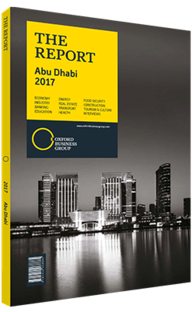Abu Dhabi announces new plan for protection of environment and biodiversity
In February 2017 the Environment Agency - Abu Dhabi (EAD) released its Strategic Plan 2016-20. This roadmap for development sets out priorities and provides an analysis of the environmental challenges facing the emirate, grouping them into nine areas, ranging from climate change to habitat loss.
The 2016-20 plan builds on frameworks established by the Abu Dhabi Environment Vision 2030 and UAE Vision 2021, along with the UAE Green Growth Strategy and the National Biodiversity Strategy and Action Plan. It also aims to protect Abu Dhabi’s air, land and water, enabling the provision of sound environmental information and promoting an ethos of shared responsibility. Establishing the EAD as a centre of excellence and a leader in environmental sustainability, while ensuring effective policy and regulation, are also goals.
Preserving Biodiversity
The strategy gives renewed emphasis to protection of the emirate’s biodiversity, which is under considerable pressure. Human population growth, with its attendant demands for water and land, pollution from industrial activities, waste and transport all have an impact on the fragile ecosystem of Abu Dhabi, threatening its flora and fauna.
Long aware of these challenges, the EAD has been conducting a raft of interrelated programmes to try to secure the emirate’s future biodiversity. The agency has conducted a great deals of scientific research, including long-term monitoring of habitats, and has been developing conservation management plans to help sustain flora and fauna. Creating and managing protected areas also comes under its biodiversity strategy, as does understanding and managing the impact of invasive species. The EAD regulates hunting in the emirate, a duty it carries out with due regard for the important cultural aspects of the sport. It also manages 10.5% of Abu Dhabi’s land and 13.2% of its marine surface as protected areas. At sea, the UAE Sustainable Fisheries Programme regulates fishing to ensure stocks recover.
Protection Of Endangered Species
The EAD is also involved in programmes aimed at protecting specific endangered species, including dugongs and sea turtles, and birds such as the falcon and the houbara bustard. It chairs the multinational Coordination Committee for the Conservation of the Arabian Oryx, and is running an international reintroduction programme for the scimitar oryx, which has seen the animal brought back to Chad. This follows successful reintroduction schemes for other species in Jordan and elsewhere.
Protected areas and reserves are part of a programme to raise awareness of the importance of biodiversity. Al Wathba Wetland Reserve is an example of this effort to synthesise environmental conservation with public involvement and private business. The reserve has an ecotourism element, with the EAD keen to see well-regulated tours of its protected areas further developed in cooperation with Abu Dhabi Tourism and Culture Authority.
“We need people to have access to these areas in a managed way, so that they become more passionate about what we have,” the EAD’s secretary-general, Razan Khalifa Al Mubarak, told OBG. A successful example of this is Qasr Al Sarab, an eco-reserve with a hotel on the edge of the Empty Quarter. The Eastern Mangroves development also combines biodiversity protection with educative tours.
Two Decades In The Making
At the launch of the new strategy, Al Mubarak noted that the new plan was the result of 20 years of studying biodiversity in the emirate. On this basis, the EAD has been developing, implementing and enhancing the policies and legal frameworks necessary to protect wildlife and marine biodiversity. The coming years will see this work continue, with great benefits for Abu Dhabi’s environment, residents and visitors.
You have reached the limit of premium articles you can view for free.
Choose from the options below to purchase print or digital editions of our Reports. You can also purchase a website subscription giving you unlimited access to all of our Reports online for 12 months.
If you have already purchased this Report or have a website subscription, please login to continue.

